

Explore Italy by place | region | time period
The Age of new people in Italy » Cagliari (Sardinia)
The Nuragic peoples spread in Sardinia between the second and third centuries BCE. They derive their name from the nuraghi, megalithic buildings that look like stone towers with small rooms inside. They arise isolated or in the center of small villages. Probably they had a defensive function since some are more than fifteen meters high.
The evolution of the nuragic peoples is also testified by the bronze working around the middle of the second millennium BCE. Examples of this craftsmanship are the nuragic bronzes dating from the 8th century BCE.

Sardinia was rich in metals like copper, silver, lead, but they did not have the tin necessary to create bronze. The Nuragics had trade routes with other peoples, but the tin could only be imported at high cost since it was mined in far away places like Cornwall, Asturias and Andalusia. The closest place where they could find it was beyond the Tyrrhenian Sea at the Gulf of Baratti (Livorno), less than 600 km away.
During the Bronze Age and the early Iron Age, there were neither shipyards nor ports in Sardinia and the rest of the Mediterranean, but only coves used as natural ports. Archaeologists have never found shipwrecks attributable to the nuragic civilization with certainty except one found off the marine area at Arbus, but the scarcity of materials did not allow a reliable analysis.
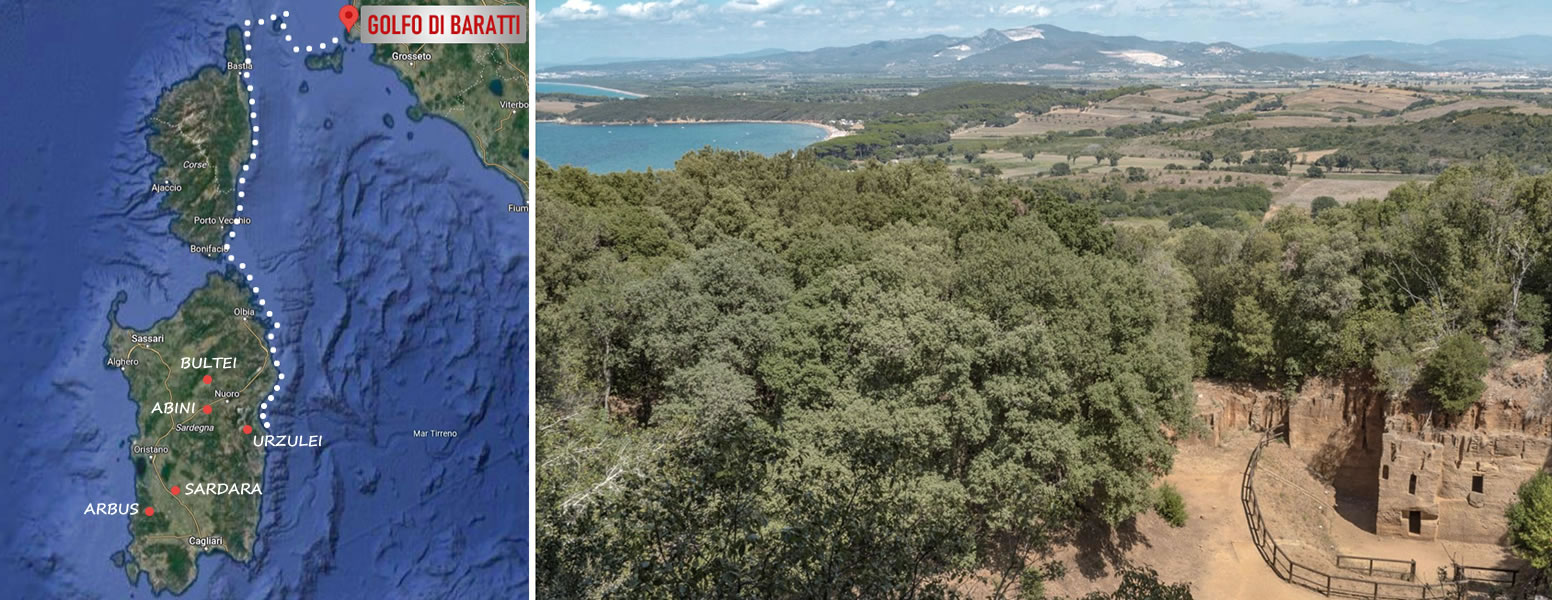
Then it is likely that the Sardinians bordered Sardinia, Corsica, the island of Capraia, the island of Elba with small boats, and arrived at the Gulf of Baratti. These nuragic ships helped to increase the Sardinian metallurgical industry and to make it one of the most characteristic and unique productions of the Mediterranean in the times of the late Bronze and Iron.
The Sardinians were almost certainly great navigators but above all they were traders ready to protect themselves in case of attack. So it is likely that they were in possession of a merchant fleet that could become a military force if necessary. To confirm their seaworthiness there are numerous boats found among the bronze nuragic. They are small sculptures considered votive statuettes or lamps, which seem to perfectly reproduce ancient boats, often equipped with a central tree and bull protomes or a deer on the bow.
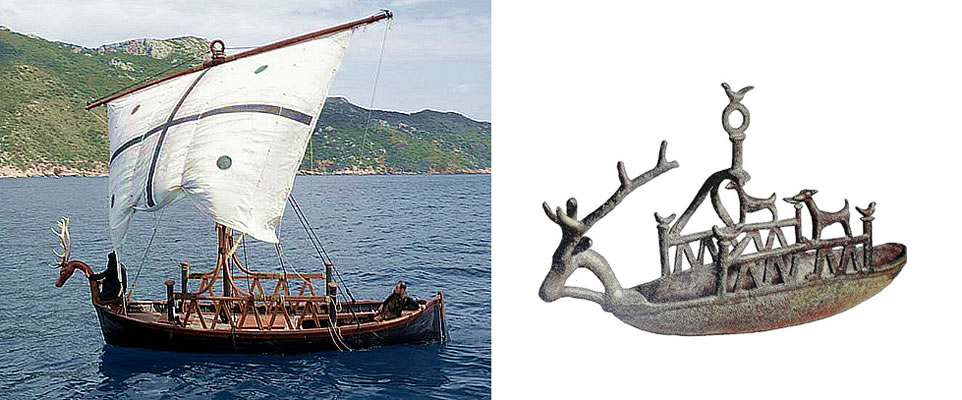
A total of 500 nuragic bronze statuettes have been found in Sardinia. The National Archaeological Museum in Cagliari holds the most important collection. These are very expressive small sculptures that make us know the nuragic society for many aspects still mysterious.
Dating back to a period between the ninth and sixth centuries BC, they owe their name to the material with which they were made, the bronze (alloy composed of tin and copper).
Through the technique of lost wax casting, the artisans first created a wax model of the object, then coated it with clay, thus obtaining the mold. On it they drilled two holes from which drained the previously heated wax. Once emptied, they filled it with molten bronze, which, as it cooled, solidified and assumed its final shape.
Many bronze statuettes were discovered at places of worship such as sacred wells. It is therefore assumed that they were votive offerings, namely a commitment of the faithful to the deity, so that the latter fulfilled their request or infused protection and help. The other bronzes were found at nuraghi, huts and other structures that were perhaps the officine where artisans worked the metals.
These small works of nuragic art have a very simple and stylized but with a strong expressive power. Initially public opinion did not appreciate them, but over time they have been reevaluated, from the aesthetic point of view so much that they also liked famous artists like Pablo Picasso.
The nuragic populations perhaps did not use writing. Therefore, in the absence of written texts, these archaic sculptures are fundamental to know the nuragic culture, everyday life, customs, social and military structure. In fact they portray people of various social classes, warriors, tribal leaders, gods, animals.
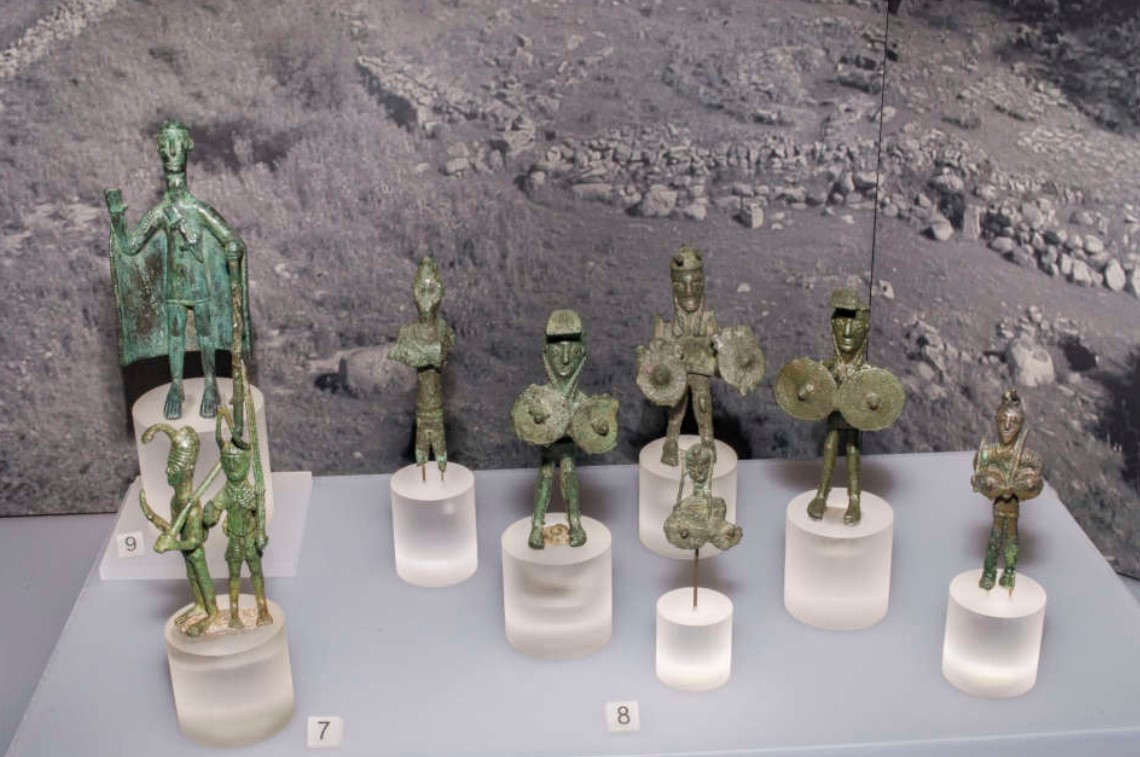
Abini was located in a strategic position in the center of Sardinia, in a valley near the banks of the river Taloro and along the transhumance roads that led men and flocks from Campidano and Ottana plains to the inner areas of the island. Given the abundance of bronzes found and the absence of defensive structures, it is thought that the village Abini was a peaceful place of sacredness and devotion that housed a federal sanctuary where the devotees of the numerous Nuragic tribes went.
The cults that took place there had to be linked to water, in fact the fulcrum of the sacred place is a well temple surrounded by a large fence with stone seats and containers for the collection of sacred water carved into the granite floor.
In 1865 a group of shepherds and local farmers began the search of the ancient village-sanctuary convinced by a boy who had had a premonitory dream, so I found the first finds.
In 1878 other villagers resumed excavations. They demolished an old olive tree that got in the way because it grew among the rows of nuragic buildings. Under its roots they found a large earthenware bag and around some storage rooms containing 108 kilos of bronze objects. Among these was the small bronze of the tribal leaders (9) recognizable by the rich clothing and the gnarled stick of command. It is a statuette about 20 cm high dating back to the Iron Age. Under the feet it has pins that were used to hold it in the rock and the right hand raised and open, as a sign of prayer.
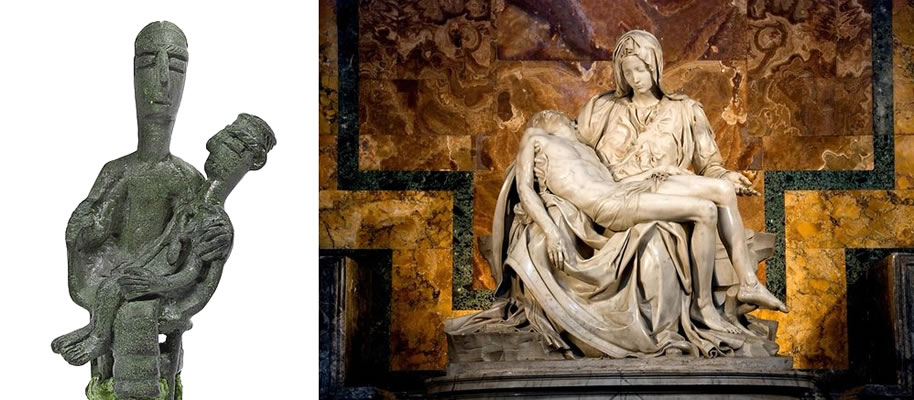
Among the various bronzes depicting female figures is the mother of the murdered, a small bronze from Urzulei’s Sa Dom'e S'Orku. It is a sort of nuragical Michelangelo's Pietà in which is depicted a woman with in her womb what is believed to be the corpse of her son. It is not clear whether the son is a teenager or an adult, it is only noticeable that he has a dagger hanging from his chest, so he should not have been so small. He appears to be defunct because both figures, unlike the other similar statuettes of mothers with children in their arms, have their eyes closed; evidently the mother in sorrow and the son since inanimate. The mother lacks an arm that originally had to be raised in prayer as in other brozetti, for example the aforementioned tribal leaders.
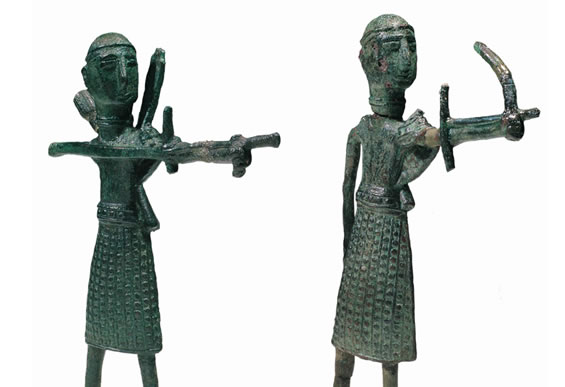

In order to know more, you can visit:
- Wikipedia: [1]
This page was last edited on 8 June 2024
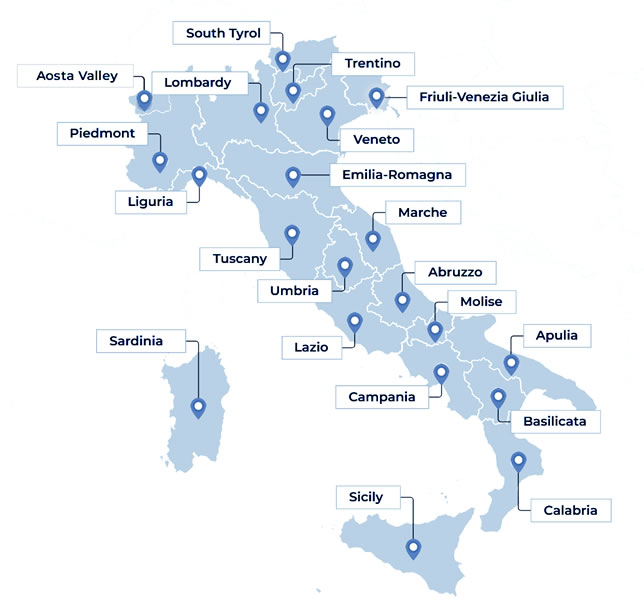
Open in Google Maps and find out what to visit in a place.
Go to: Abruzzo | Aosta Valley | Apulia | Basilicata | Calabria | Campania | Emilia Romagna | Friuli Venezia Giulia | Lazio | Liguria | Lombardy | Marche | Molise | Piedmont | Sardinia | Sicily | South Tyrol | Trentino | Tuscany | Umbria | Veneto

Text and images are available under the Creative Commons Attribution-ShareAlike License 4.0; - italystudynotes.eu - Privacy